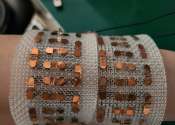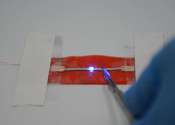Researchers develop a stretchable and efficient wearable thermoelectric energy harvester
Dr. Hyekyoung Choi and Min Ju Yun's research team from the Energy Conversion Materials Research Center, Korea Electrotechnology Research Institute (KERI), has developed a technology that can increase the flexibility and efficiency ...
Nov 21, 2023
0
317









